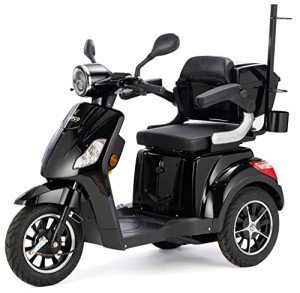Mobility Scooters: A Comprehensive Guide
Mobility scooters have actually ended up being an important mode of transport for numerous individuals facing mobility obstacles. This short article explores the numerous aspects of mobility scooters, including their types, advantages, functions, and a guide for potential purchasers.
Comprehending Mobility Scooters
Mobility scooters are electrically powered devices created for people with limited mobility. They offer a method of transportation for people who might have difficulty walking however still want to maintain their independence. They are available in numerous designs and features to deal with a vast array of requirements.
Types of Mobility Scooters
Mobility scooters can usually be categorized into three primary types:
| Type | Description | Best For |
|---|---|---|
| Compact Scooters | These are small and lightweight, ideal for indoors and short journeys. | Users with limited storage space or those who travel often. |
| Mid-size Scooters | A balance between portability and stability, ideal for both indoor and outdoor usage. | Those who require to cover a variety of surfaces. |
| Sturdy Scooters | Big and robust, created for rugged outdoor usage and heavier individuals. | Users needing additional weight capacity or going off-road. |
Key Features of Mobility Scooters
The choice of mobility scooter typically depends on the functions that line up with private requirements. Here are some of the essential features to think about:
- Weight Capacity: Mobility scooters feature different weight limitations. It is essential to choose a scooter that can properly support the user's weight.
- Variety: The distance a scooter can take a trip on a single charge varies. Depending on user needs, one might choose scooters with a range of as much as 40 miles.
- Speed: Most mobility scooters can reach speeds between 4 to 8 miles per hour. Consider what speed is comfortable and safe for the intended environment.
- Turning Radius: A compact turning radius is necessary for indoor use, permitting much easier navigation in tight spaces.
- Battery Type: The kind of batteries used can affect the scooter's efficiency. Lead-acid and lithium-ion batteries are the most common.
Advantages of Using Mobility Scooters
The benefits of mobility scooters extend beyond simply transportation. Some essential advantages consist of:
- Independence: Users can browse their environment without counting on caregivers, promoting self-reliance and confidence.
- Health Benefits: Using a scooter can motivate outside activity, causing physical and mental health improvements by lowering feelings of seclusion.
- Convenience: Scooters can quickly be operated in various environments, whether inside, in shopping malls, or outdoors.
Essential Considerations When Buying a Mobility Scooter
When acquiring a mobility scooter, several considerations can help ensure that you pick the best design:
Assess Individual Needs:
- Mobility level: Consider how much assistance the person will require.
- Variety of use: Determine where the scooter will mostly be utilized (inside, outdoors, on rough terrains, etc).
Test Drive:
- Always test drive numerous designs to discover an ideal fit. Take note of convenience, ease of steering, and the scooter's responsiveness.
Review Safety Features:
- Look for scooters with appropriate safety functions like lights, signs, and anti-tip designs.
Check Warranty and Service Options:
- A reputable warranty and available service alternatives are essential for long-lasting use.
FAQs about Mobility Scooters
1. How quick do mobility scooters go?Mobility scooters generally have speeds ranging from 4 to 8 miles per hour, with many developed for security rather than high-speed travel. 2. Are there darla.top on mobility scooters?Yes, mobility
scooters come with particular weight limitations, typically varying from
250 pounds to over 500 pounds, depending upon the design. 3. Can mobility scooters be utilized indoors?Certain models, particularly compact scooters, are specifically designed for
indoor use and are easier to steer in tight areas. 4. How typically do the batteries need to be replaced?Battery life can vary based on use, however generally, with proper care, batteries may last in between 1 to 3 years before requiring replacement
. 5. Are mobility scooters covered by insurance?Coverage can vary, however some insurance coverage plans, consisting of Medicare and Medicaid, might cover part of the cost. It's recommended to inspect with specific insurance companies. Mobility scooters act as a
important tool for lots of people, enabling them to maintain
their freedom and independence. By understanding the various types and features of mobility scooters, individuals can make informed decisions tailored to their specific requirements.
Whether used for errands, mingling, or leisurely activities, mobility scooters can boost the lifestyle for those with mobility restrictions. Investing in a mobility scooter is a choice that can significantly affect a person's life. Therefore, individuals must thoroughly evaluate their choices and select a model that best aligns with their lifestyle and mobility requirements
.

